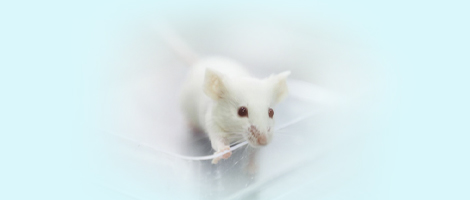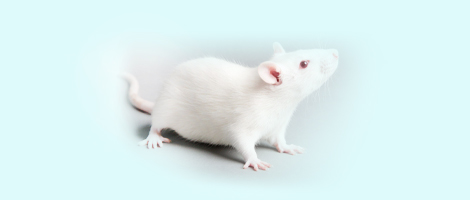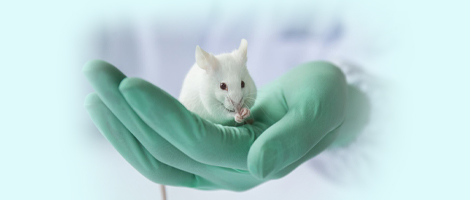| [1] |
国家市场监督管理总局, 国家标准化管理委员会. 实验动物 环境及设施: [S]. 北京: 中国标准出版社, 2023.
|
|
State Administration for Market Regulation, National Standardization Administration. Laboratory animal——Environment and housing facilities: [S]. Beijing: Standards Press of China, 2023.
|
| [2] |
孙艳艳, 林燕燕, 孙雯, 等. 光照对雌性幼鼠下丘脑—垂体—性腺轴发育的影响[J]. 中国中西医结合杂志, 2024, 44(4):463-468. DOI: 10.7661/j.cjim.20240108.220 .
|
|
SUN Y Y, LIN Y Y, SUN W, et al. Effect of light on hypothalamic-pituitary-gonadal axis in young female golden Hamster [J]. Chin J Integr Tradit West Med, 2024, 44(4):463-468. DOI: 10.7661/j.cjim.20240108.220 .
|
| [3] |
吴宪文, 陈烨, 徐国恒. 光照对大小鼠繁育性能影响的研究进展[J]. 实验动物科学, 2023, 40(4):83-88. DOI: 10.3969/j.issn.1006-6179.2023.04.016 .
|
|
WU X W, CHEN Y, XU G H. Research progress on effects of light on reproductive performance of rats and mice[J]. Lab Anim Sci, 2023, 40(4):83-88. DOI: 10.3969/j.issn.1006-6179.2023.04.016 .
|
| [4] |
杜文豪, 高富敏, 李小龙, 等. 持续光照和熬夜对雌性生殖功能的影响[J]. 国际生殖健康/计划生育杂志, 2023, 42(3):245-249. DOI: 10.12280/gjszjk.20230010 .
|
|
DU W H, GAO F M, LI X L, et al. Effects of continuous light and staying up late on female reproductive function[J]. J Int Reprod Health/Family Plan, 2023, 42(3):245-249. DOI: 10.12280/gjszjk.20230010 .
|
| [5] |
李丛艳, 李钰莹, 郑洁, 等. 光照强度对四川白兔同期发情和繁殖性能的影响[J]. 畜牧与兽医, 2022, 54(8):40-44.
|
|
LI C Y, LI Y Y, ZHENG J, et al. Effect of light intensity on estrus synchronization and reproduction performance of Sichuan white rabbit[J]. Anim Husb Vet Med, 2022, 54(8):40-44.
|
| [6] |
程伶俐. 不同光照对皮质酮注射联合慢性束缚抑郁模型小鼠的影响及其机制研究[D]. 广州: 广州医科大学, 2023. DOI: 10.27043/d.cnki.ggzyc.2023.000267 .
|
|
CHENG L L. Effects of different light parameter on corticosterone chronic restraint stress depression model mice and its mechanism[D]. Guangzhou: Guangzhou Medical University, 2023. DOI:10.27043/d.cnki.ggzyc.2023.000267 .
|
| [7] |
宋亚玲, 边专. 生物节律在牙体硬组织发育中的作用[J]. 中华口腔医学杂志, 2023, 58(1):11-16. DOI:10.3760/cma.j.cn112144-20220930-00514 .
|
|
SONG Y L, BIAN Z. Effects of circadian rhythm on the development of dental hard tissues[J]. Chin J Stomatol, 2023, 58(1):11-16. DOI:10.3760/cma.j.cn112144-20220930-00514 .
|
| [8] |
陈莉莉. 生物节律调控口腔颌面组织生理活动及其相关疾病进程的研究进展[J]. 中华口腔医学杂志, 2022, 57(5):481-489. DOI: 10.3760/cma.j.cn112144-20220228-00082 .
|
|
CHEN L L. Advances in circadian rhythms in oral maxillofacial tissues and oral-related diseases[J]. Chin J Stomatol, 2022, 57(5):481-489. DOI: 10.3760/cma.j.cn112144-20220228-00082 .
|
| [9] |
张凯雪, 方文卿, 陈娟, 等. 约束视距下照度诱导近视动物模型的研究[J]. 眼科, 2023, 32(4):294-298. DOI: 10.13281/j.cnki.issn.1004-4469.2023.04.005 .
|
|
ZHANG K X, FANG W Q, CHEN J, et al. Study of myopic animal model induced by illuminance under constrained visual range[J]. Ophthalmol China, 2023, 32(4):294-298. DOI: 10.13281/j.cnki.issn.1004-4469.2023.04.005 .
|
| [10] |
刘嘉昊, 王金兴, 胡俊杰, 等. 罗汉果甜苷V对持续光照小鼠脂肪积累的缓解作用[J]. 南方农业学报, 2022, 53(9):2624-2633. DOI: 10.3969/j.issn.2095-1191.2022.09.025 .
|
|
LIU J H, WANG J X, HU J J, et al. Mogroside V attenuated constant light exposure-induced accumulation of body fat mass in mice[J]. J South Agric, 2022, 53(9):2624-2633. DOI: 10.3969/j.issn.2095-1191.2022.09.025 .
|
| [11] |
HAWKINS P, GOLLEDGE H D R. The 9 to 5 Rodent - Time for Change? Scientific and animal welfare implications of circadian and light effects on laboratory mice and rats[J]. J Neurosci Methods, 2018, 300:20-25. DOI: 10.1016/j.jneumeth. 2017.05.014 .
|
| [12] |
National Research Council. Guide for the care and use of laboratory animals[M]. 8th ed. Washington, DC:The National Academies Press, 2011. DOI: 10.17226/12910 .
|
| [13] |
環境省自然環境局総務課動物愛護管理室. 実験動物の飼養及び保管並びに苦痛の軽減に関する基準の解説[M/OL]. [2025-02-15]. .
|
|
Animal Welfare and Management Office, General Affairs Division, Natural Environment Bureau, Ministry of the Environment, Japan. Commentary on the standards for the care and management of laboratory animals and relief of distress[M/OL]. [2025-02-15]. .
|
| [14] |
Official Journal of the European Union. On guidelines for the accommodation and care of animals used for experimental and other scientific purposes [S/OL]. (2007-06-18)[2025-02-01]. .
|
| [15] |
刘巍, 张心妍, 侯丰田, 等. 实验动物设施换气次数检测能力验证结果评价[J]. 实验动物与比较医学, 2025, 45(1):87-95. DOl:10.12300/j.issn.1674-5817.2024.101.
|
|
LIU W, ZHANG X Y, HOU F T, et al. Evaluation of proficiency validation results for air change rate testing in laboratory animal facilities[J]. Lab Anim Comp Med, 2025, 45(1):87-95. DOl: 10.12300/j.issn.1674-5817.2024.101.
|
| [16] |
住房和城乡建设部, 国家市场监督管理总局. 建筑照明设计标准: [S]. 北京:中国建筑工业出版社, 2024.
|
|
Ministry of Housing and Urban-Rural Development, State Administration for Market Regulation. Standard for lighting design of buildings: [S]. Beijing: China Architecture & Building Press, 2024.
|
| [17] |
中国合格评定国家认可委员会. 实验室认可规则: CNAS—RL01 [S/OL].(2019-12-30)[2025-02-15]. .
|
|
China National Accreditation Service for Conformity Assessment. Rules for the accreditation of laboratories: CNAS-RL01 [S/OL]. (2019-12-30)[2025-02-15]. .
|
| [18] |
中国合格评定国家认可委员会. 检测和校准实验室能力认可准则: CNAS—CL01 [S/OL]. (2019-02-20)[2025-02-15] .
|
|
China National Accreditation Service for Conformity Assessment. Accreditation criteria for the competence of testing and calibration laboratories: CNAS-CL01 [S/OL]. (2019-02-20)[2025-02-15]. .
|







 ), 许中衎1,2, 侯丰田1,2, 张心妍1,2, 乔涵1, 马丽颖1,2(
), 许中衎1,2, 侯丰田1,2, 张心妍1,2, 乔涵1, 马丽颖1,2( )(
)( )
)
 ), XU Zhongkan1,2, HOU Fengtian1,2, ZHANG Xinyan1,2, QIAO Han1, MA Liying1,2(
), XU Zhongkan1,2, HOU Fengtian1,2, ZHANG Xinyan1,2, QIAO Han1, MA Liying1,2( )(
)( )
)